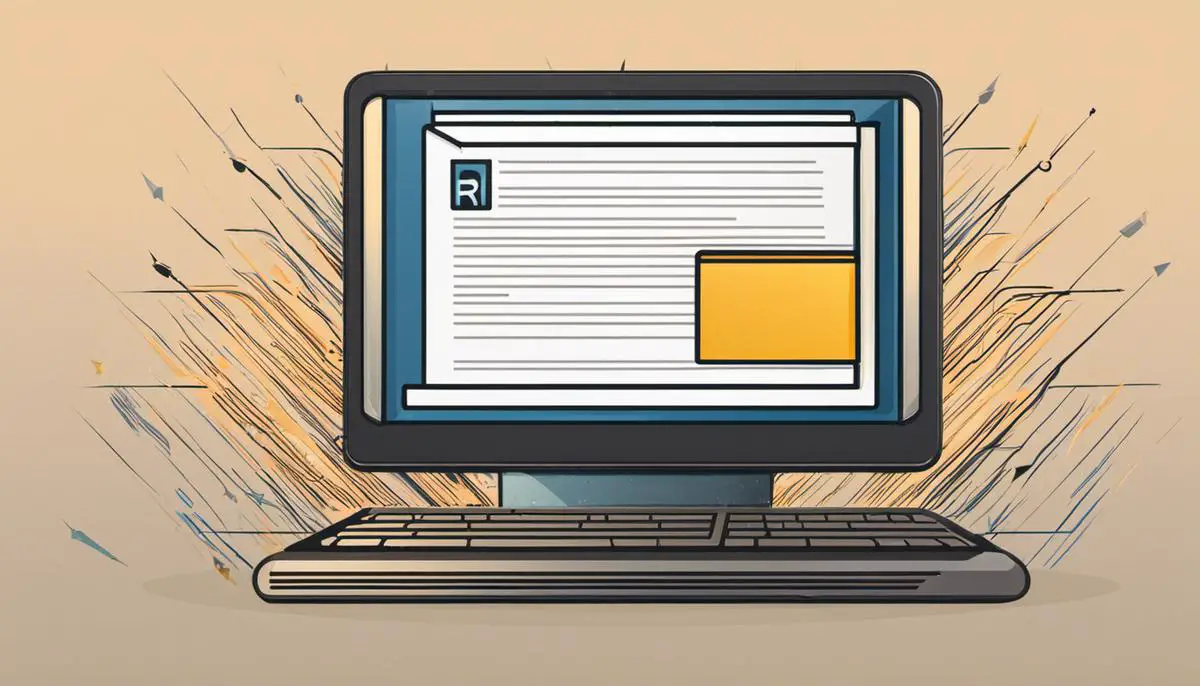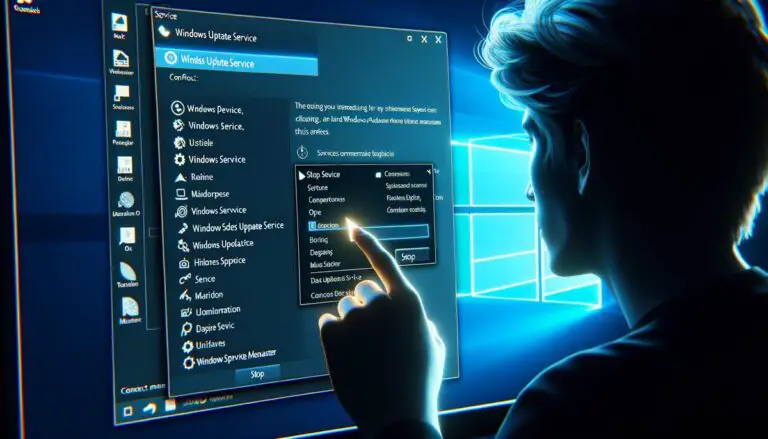How to Restart Windows Explorer: Quick Steps
Learn to quickly restart Windows Explorer to resolve crashes and improve system performance. Get back on track fast.
Keeping your Windows system operating seamlessly necessitates a good understanding of one of its most pivotal applications, Windows Explorer.
As an essential file management tool, it plays a major role in the navigation and functionality of your computer.
Beyond just an application for browsing files, its functions are integral to many aspects of the PC user experience. As such, it is important not just to be familiar with it, but to understand how to troubleshoot it, including restarting the application when necessary.
One such method of doing this is via the Task Manager, a key tool that allows you to terminate and restart processes within your system effectively and safely.
Understanding Windows Explorer – Restart Windows Explorer
Title: Unpacking Windows Explorer: A Comprehensive Examination
Are you interested in the nuts and bolts of your computer system? If yes, then it is worth learning more about one of the primary in-built applications in your windows operating system – the Windows Explorer.
Windows Explorer, often referred to as Explorer, is a file manager application included in Microsoft’s Windows operating systems. It’s the interface that presents you with your desktop, your folders and files, and even the Start menu. It is an integral part of the Windows operating system and delves deeper than just file management.
Let’s drive straight into its main roles and explore the ways it can streamline and refine user experience:
- File Management: The primary function of Windows Explorer is file management. It provides a graphical interface to access and manage files, directories/folders, and network connections. It allows for actions such as copying, moving, deleting, renaming, and searching for files and folders.
- Access Device Usage: Apart from file management, Windows Explorer allows the user to inspect hardware connected to the computer. Devices such as printers, tablets, USBs, as well as internal and external drives, can all be accessed and managed via Windows Explorer.
- Network Access: Windows Explorer gives capability for users to view and connect to network devices and resources. This means you can access files on networked systems, servers, and external storage hardware.
- Content Preview: With Windows Explorer, you can preview files without opening them in dedicated applications. For instance, you can preview images, videos, and even some document files.
- System Customization: Windows Explorer isn’t just about browsing. You can also customize the appearance of your desktop and other system locations. Want a cleaner desktop? Prefer larger icons or a detailed list view? All these are mere clicks away with Explorer.
- Frequently Used Applications Access: Windows Explorer enhances efficiency by providing easy access to frequently used applications through the taskbar and the Start menu.
Clearly, Windows Explorer does more than just explore! It’s essentially the command center of your computer where you have the power to manage your files, folders, programs, and devices. This app aims to simplify operations and provide the easiest platform for users to interact with their systems, thus shifting the technological curve towards user-friendly computing. Technology is here to make life simpler, and Windows Explorer excels just at that.
In a nutshell, Windows Explorer is the home base of your computer. It’s the wielding tool that helps navigate, control, manage, and customize, thus transforming your PC experience from merely good to exceptionally refined. So make sure you leverage Windows Explorer to experience an optimized, clutter-free, timely, and efficient workspace on your Windows platform.
And remember, right beside every uncharted territory, there lies an explorer, eager and ready. The world of Windows Explorer is no exception!

Finding and Terminating Windows Explorer in Task Manager
(Restart Windows Explorer)
As a tech aficionado, you probably agree that Windows Explorer is the default file manager which provides a user interface for accessing your file system and performing tasks such as accessing network drives. The heart of Windows, it’s the gateway to pretty much everything on your PC. Sometimes, when Windows Explorer hiccups or crashes, you’ll need to take matters into your hands — quite literally, by using the Task Manager.
There’s a wellspring of untapped power that lies under the Task Manager’s hood. Let’s delve into the method of finding and ending a task for Windows Explorer.
First, you must summon the reliable and efficient Task Manager. Make a simple press on ‘Ctrl + Shift + Esc’. You can also choose the traditional route – hit ‘Ctrl + Alt + Del’, then select ‘Task Manager’ from the options that pop up.
The interface in front of you might initially appear minimalistic. If so, click the ‘More details’ button lying at the bottom. This will unveil the illustrious full view of Task Manager. Here, you’ll find an array of tabs: ‘Processes’, ‘Performance’, ‘App history’, ‘Startup’, ‘Users’, ‘Details’, and ‘Services’.
For our current mission, we’re headlining the ‘Processes’ tab. This tab is a fascinating realm – a whirring playground of all running tasks, applications, background processes — the pulsating life-tokens of your Windows ecosystem.
Take a moment; let your gaze drift towards the ‘Windows processes’ section of the window. Search for the ‘Windows Explorer’ process. It should sit comfortably amongst the list of numerous other processes.
You’ve found the culprit! Now, it’s time to end the task. Select the ‘Windows Explorer’ process by clicking it and then proceed to click on the ‘Restart’ button in the bottom right of the window. This action will stop the process. Fear not, the process will automatically restart after a few moments. An interruption in smooth operation can cause Windows Explorer to malfunction— ending the task can oft-times rectify any issues you’ve been facing.
A piece of advice — use this strategy wisely. Yes, the method is direct and effective. However, this considerable power comes with responsibility. A hasty or unwarranted termination of processes can lead to data loss or even cause destabilization of your system.
Be the qualified master of your windows-based domain, not a reckless executioner. Remember, the wise tech virtuoso uses knowledge as both a shield and a sword.
Congratulations, you’ve just dived deeper into your tech innovation journey. Calibration and customization are yours for the taking. Relish the newfound optimization and watch it orchestrate your system’s rhythm, flawlessly. Another piece of the tech world, demystified.

Photo by piensaenpixel on Unsplash
Restarting Windows Explorer
Navigating through the complex world of digital tools and applications, you’ll encounter unprecedented problems where usual rebooting or reinstallation methods may not always work. In situations like these, tools like the Windows Task Manager become your best allies. This article is geared toward helping you understand further the dynamics involved in the restarting process of Windows Explorer once it has been terminated.
After the termination of Windows Explorer, it might be confusing to understand how to restart it without a full system restart. But these times indeed call for utilitarian, smarter solutions. To begin with, circumvent the usual path by using the Task Manager.
As a follow-on to the previous instructions, you’ll want to stay within that all-powerful Task Manager. A tab at the top, labeled as ‘Applications’, is where you will find the ‘New Task’ button. This button serves as your primary gateway to recreating the Windows Explorer process, essentially resurrecting it from its termination.
Click on ‘New Task’, and a new window pops up titled ‘Create New Task’. Here, it’s time to invoke Windows Explorer back to life. In the ‘Open’ text box, type ‘explorer.exe’ and hit ‘OK’. With this, you are essentially calling back the executable command for Windows Explorer, prompting it to restart.
In a few moments, Windows Explorer will reappear and start functioning as normal. One might notice a brief refreshing of the desktop screen and taskbar, which is perfectly fine.
This method is one of the quickest and most practical to restart Windows Explorer. It omits the need for restarting your entire system, thus saving time and eliminating the risk of unsaved data loss or disturbances in other running applications.
Let’s also emphasize the role of ‘explorer.exe’. This is the critical process for managing various features of your computer, including the taskbar, desktop, and file explorer. Therefore, restarting ‘explorer.exe’, refurbishes these features, ensuring your operating system runs smoothly with no hitches.
This method gives you the reins of controlling your operating system and processes. Mastering this strategy unleashes a new layer of power and benefits leading to an optimized user experience and saving time.
Remember, in the digital sphere, understanding the core structure of your tools and applications is not only essential but also empowering.
By understanding these processes, you can tackle troubleshooting with keen precision and smarts, leading to efficient problem-solving and system utilization.
Embrace this knowledge, and you’ll find yourself conquering all the digital challenges thrown at you, navigating the tech world like a true pro.

Grasping the complexities of effective file and process management is an essential skill in maintaining a smooth-running Windows operating system. Windows Explorer, as a file management tool, plays a vital role in this system.
Its effective operation is crucial to your overall user experience. Understanding its key features, learning how to locate it in the Task Manager, and knowing how to safely and effectively restart it, will provide you with greater control over your PC.
Furthermore, by achieving a higher understanding of these processes, you can ensure a more efficient and problem-free use of your Windows system.
Related Posts:






